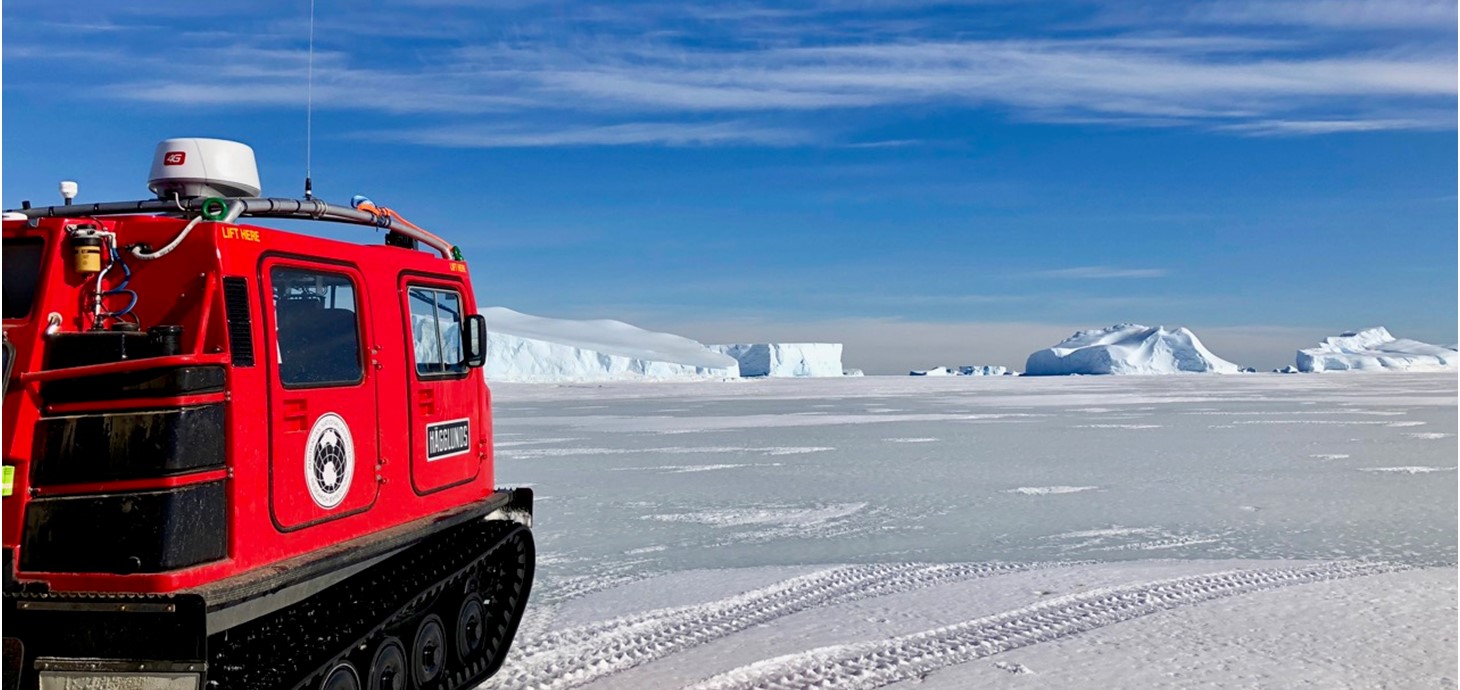These articles are now archived and will no longer be updated.

A Haeglund over-snow vehicle used by Antarctic researchers for fieldwork
Research into the effect of climate change in the Antarctic has been boosted by an award of $20 million (£10 million) from the Australian government for work led by the University of Tasmania in partnership with Swansea University glaciologists.
The funding will mean that scientists from the two institutions and other international partners can continue joint research into the effects of climate change on the Australian Antarctic Territory, which covers around 45 % of the East Antarctic Ice Sheet’s coastline.
The funding bid was for an ‘Australian Centre for Excellence in Antarctic Science’. It was one of only two bids that were successful.
Swansea University’s Glaciology Group, with leadership from Professor Bernd Kulessa, has established a strategic partnership with the Institute for Marine and Antarctic Studies (IMAS) at the University of Tasmania. The Swansea scientists bring expertise in areas such as cryosphere geophysics, satellite remote sensing and ice sheet modelling.
The Swansea and Australian teams are already collaborating. Their work was captured in a stunning virtual reality film – called The Antarctic Experience – which became a big success in Australia.
It chronicles a day in the life of scientists carrying out research at the Australian Antarctic Division’s Davis Station during the 2017/18 field season, and features Swansea University glaciologist Dr Sarah Thompson.
Watch the trailer: The Antarctic Experience
Existing funded areas of collaboration include:
- The Australian Antarctic Division’s five-year project ‘Outlet Glacier Dynamics in Princess Elizabeth Land, East Antarctica’
- The new Australian Antarctic Division project called ‘Helicopter Trials of Ground Penetrating Radar on Glaciers’. – follow the blog
- A major Discovery Project funded by the Australian Research Council called ‘Towards an early warning of Antarctic ice sheet collapse from seismology’, led by Prof. Anya Reading at the University of Tasmania. The project will establish a physical basis for seismic observations of small changes at the base of the large Aurora and Wilkes basins of the East Antarctic Ice Sheet, using computer simulations and re-analysis of existing seismological data sets.
Professor Bernd Kulessa of Swansea University Glaciology Group said:
“This new funding will provide an excellent gateway for Swansea researchers to conduct future research in East Antarctica.
The teams at Swansea and IMAS each have a strong track record of polar research. Now, by joining forces in this partnership, we can greatly boost our efforts to understand the effect of climate change on the Antarctic.”
Professor Rufus Black, University of Tasmania Vice-Chancellor, said:
“Our long-term research focus is on the changes in the Antarctic and Southern Ocean, which have significant implications for the global climate system.
In collaboration with national and international partners, the work we do from Tasmania is critical to the Earth’s future.”
University of Tasmania scientists carry out world-leading Antarctic and Southern Ocean research in close collaboration with Hobart-based staff at the Australian Antarctic Division (AAD) and CSIRO, as well as with research organisations nationally and overseas.
